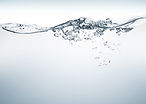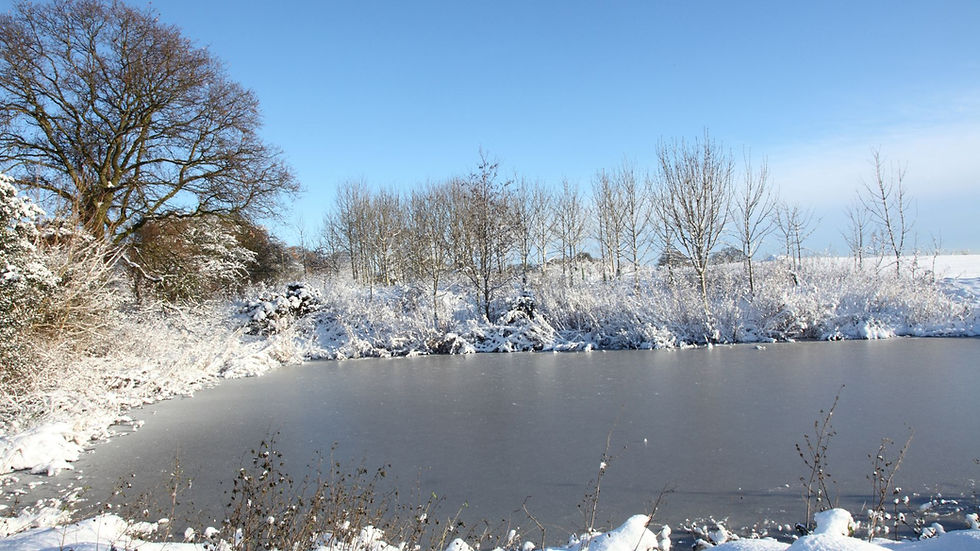Wildlife Friendly Fish Ponds: A Deep Dive into Creating Biodiverse Garden Ecosystems
- Richard Fulford

- Jan 31, 2024
- 3 min read
Creating a wildlife friendly fish pond is not just about adding beauty to your garden it's about fostering a thriving, biodiverse ecosystem. This comprehensive guide will help you understand the intricate balance of a pond ecosystem and how to enhance it to support a wide range of wildlife.

The Foundation: Water Quality and Pond Structure
Water Quality
Oxygenation
Oxygenation refers to the process of adding oxygen to the water, which is vital for the survival and health of fish, beneficial bacteria, and other aquatic organisms.
Natural Filtration
Natural filtration involves using natural processes and biological organisms to purify the pond water, removing waste products, excess nutrients, and harmful substances. This can be achieved through:
Beneficial Bacteria: These microorganisms break down fish waste, dead plant materials, and other organic matter into less harmful substances. They often live in the pond's substrate and within biofilters.
Plant Filtration: Plants absorb nutrients from the water, including nitrates and phosphates, which help control algae growth and maintain water quality. Marginal plants, submerged plants, and floating plants contribute to this process.
Biofilters: A biofilter is a system that provides a habitat for beneficial bacteria. As water passes through the biofilter, these bacteria perform biological filtration, breaking down harmful waste products.
Gravel and rocks substrates: These substrates can house beneficial bacteria and act as natural filters, especially in the shallower areas of the pond.
Regular cleaning and maintenance: Removing debris like fallen leaves, uneaten fish food, and dead plants helps keep the pond clean and reduces the load on the natural filtration system.
Both oxygenation and natural filtration are crucial for creating a stable and healthy pond environment. They work together to ensure the water remains clean and safe for all inhabitants, promoting a balanced ecosystem. Properly managing these aspects leads to clearer water, healthier plants and fish, and an overall more enjoyable pond experience.
Pond Structure
Varied Depths
Incorporate areas of different depths to cater to various species. Shallow zones are ideal for amphibians and insects, while deeper sections support fish.
Gentle Slopes
Gradual slopes along the edges allow safe access for wildlife and prevent accidents.
Plant Diversity: Creating Layers of Habitat
Check out our other blog to learn about water plants in garden ponds.

Wildlife Attraction: Beyond the Aquatic
Bird-Friendly Features
Bird Baths and Feeders
Incorporating bird friendly features like bird baths and feeders near a garden pond can significantly enhance the appeal and ecological balance of your outdoor space. Not only do these features attract a variety of birds, but they also create a lively and dynamic environment.
Native Shrubs and Trees
When selecting native shrubs and trees for garden ponds, it's important to consider species that are well adapted to your local climate and ecosystem. These plants should be able to thrive in the moist, sometimes fluctuating conditions near a pond. Here are some general suggestions: Willows, Dogwoods, Alder Trees, Ferns, Swamp Milkweed
Beneficial Insects
Flowering Plants
When creating a garden pond, incorporating pollinator-friendly flowers can enhance the ecological value of your space by attracting beneficial insects like bees, butterflies, and other pollinators. Here are some examples of flowers that are known for their ability to attract and support pollinators: Purple Coneflower, Black-eyed Susan, Joe-Pye Weed, Blazing Star
No Pesticides
Avoid using harmful chemicals that can deter wildlife and damage the pond’s ecosystem.
Synchronising Aquatic Life in a Wildlife Friendly Fish Pond
Fish Selection
Non Predatory Species
Selecting non predatory fish species for your garden pond is crucial if you aim to create a balanced, wildlife friendly environment. Non predatory fish tend to be more peaceful and coexist better with other pond inhabitants, from smaller fish to amphibians and beneficial insects. Here are a few examples of fish species suitable for garden ponds: Goldfish, Koi, Rosy Red Minnows, Golden Orfe, Rudd
Feeding Practices, Natural Diet
Encourage a natural diet as much as possible. Overfeeding can lead to water quality issues.

Building Habitats
Logs, Rocks, and Shelters
Purpose
These natural elements provide hiding spots for fish, frogs, and insects.
Arrangement
Strategically place these features to create a naturalistic look and functional habitat.
Seasonal Care for a Dynamic Ecosystem
Spring and Summer
Plant Management: Trim back overgrown plants and manage algae growth.
Water Quality: Regularly check and adjust as needed.
Autumn and Winter
Preparation: Prepare the pond for winter by removing decaying plant matter and installing a pond heater or aerator to prevent freezing.
Wildlife Considerations
Winter Shelter: Ensure that there are areas for amphibians and insects to overwinter safely.
Conclusion
Creating a wildlife friendly fish pond is a rewarding endeavour that brings life and beauty to your garden. It requires careful planning, but the result is a self sustaining ecosystem that supports a diverse range of species. Enjoy the harmony of nature right in your garden!
Get in touch with FishLife Pond Services now and transform your outdoor area into a beautiful garden sanctuary.





Comments